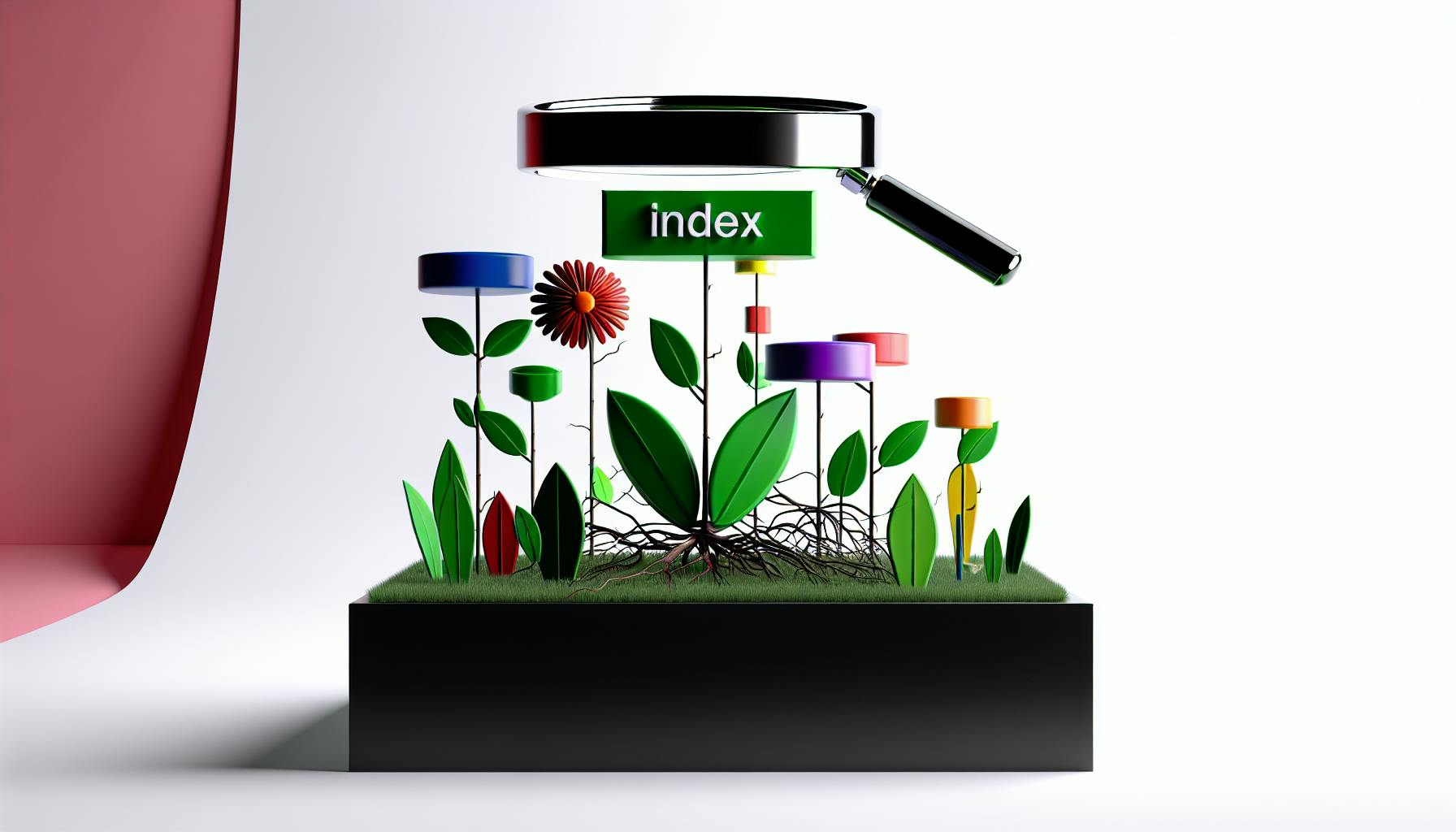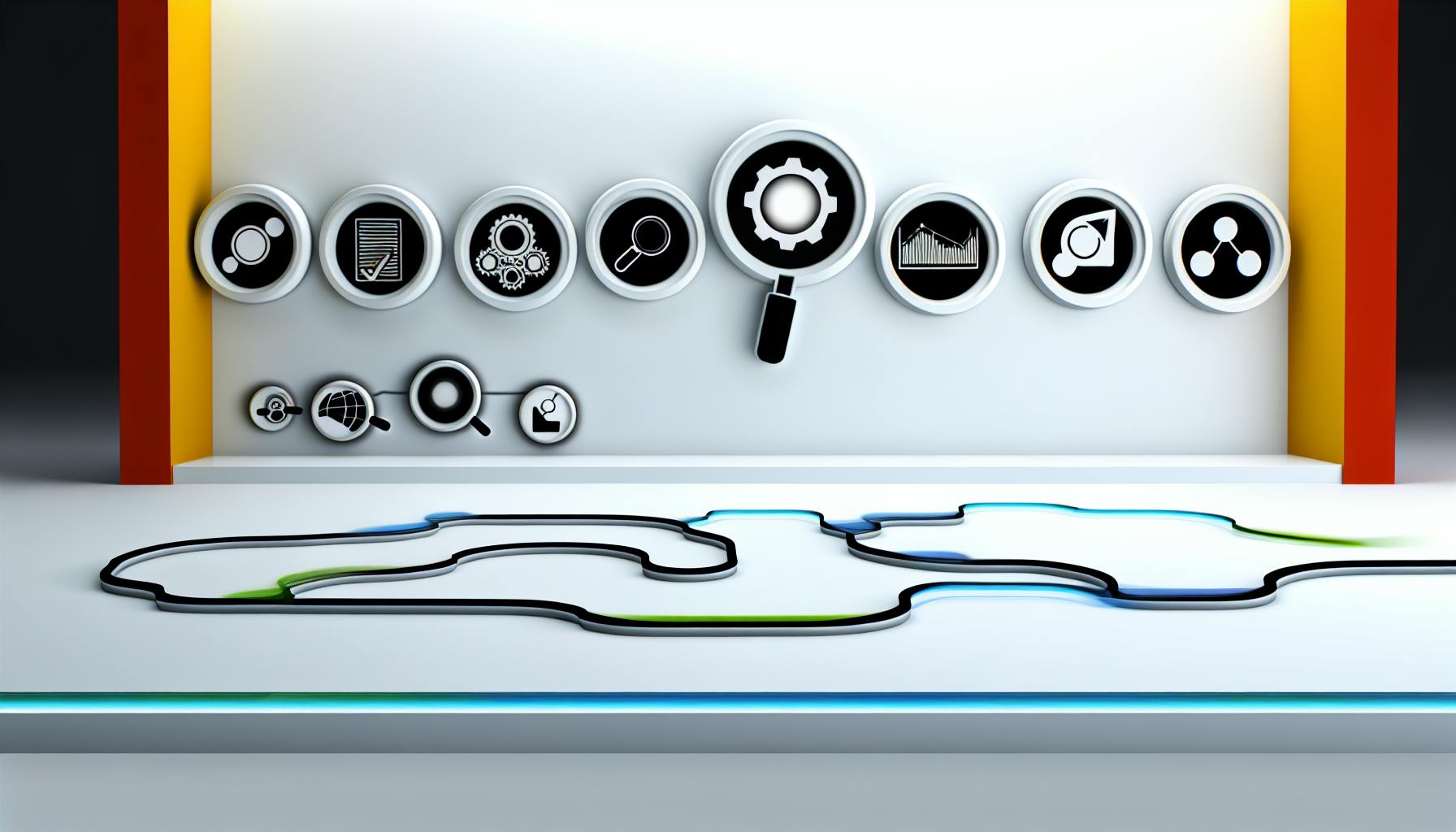We can all agree that creating content that resonates with search engines and audiences is an essential yet challenging aspect of digital marketing.
In this post, you'll discover the core elements for optimizing content to improve SEO and engagement, equipped with actionable tactics to execute an effective content strategy.
First, we'll define SEO optimized content and clarify why it's critical for driving results. Then, you'll learn key optimization components - from compelling titles and meta data to heading tags and images. Finally, we'll explore advanced tactics and content promotion to master end-to-end content creation and promotion.**
Introduction to SEO Optimized Content Creation
Creating optimized content that resonates with both search engines and your audience is essential for driving qualified organic traffic to your website. By targeting relevant keywords and optimizing elements like headlines, body text, and meta descriptions, you can dramatically boost your search rankings and visibility.
Defining SEO Optimized Content and Its Elements
SEO optimized content refers to high-quality, informative content that also appeals to search engine bots. The key elements of optimized content include:
- Relevant, Keyword-Focused Headlines: Craft compelling headlines that contain your target keyword(s) to capture attention.
- Body Text: Naturally incorporate target keywords in your content while providing value to readers. Use related keywords and synonyms to avoid over-optimization.
- Alt Text for Images: Describe images with target keywords to help search bots understand your visual assets.
- Meta Descriptions: Summarize page content with keyword-rich descriptions that entice searchers to click.
- Internal Links: Link relevant content within your site to establish topical authority and pass "link juice".
When these elements are optimized effectively, pages can rank higher for valuable search queries.
Why is Content Optimization Important in Digital Marketing
With search engines increasingly focused on understanding content quality and relevance, optimizing your content has become crucial for digital marketing success:
- Drives more qualified organic traffic from higher rankings for buyer keywords.
- Boosts conversions since visitors reach relevant pages that provide solutions.
- Improves user experience through informative and engaging content presentation.
- Establishes authority and thought leadership when content solves audience pain points.
Content Optimization for Beginners: Getting Started
Here are some tips to kickstart your content optimization efforts:
- Research target keywords using tools like Google Keyword Planner to identify high-value topics and questions to address.
- Craft keyword-focused content that answers search queries while appealing to human readers.
- Optimize on-page elements like H1 & H2 tags, meta descriptions, alt text, internal links and body content.
- Promote your content through social media, email, and link building outreach.
- Analyze performance with Google Search Console and Analytics to refine your strategy.
By consistently creating SEO optimized content that resonates with your audience, you can dramatically boost organic traffic over time. Test and iterate to determine what works best.
What is SEO Optimised?
The Foundation of Search Engine Optimization Strategy
Finding You
Search engine optimization (SEO) is the process of optimizing web pages and content for search engines like Google. The goal is to improve the visibility and ranking of a website or webpage so that it appears higher in search results for specific keywords.
Well-crafted SEO optimised content helps search engines understand the relevance and value of the content to search queries. By optimizing the content elements, structure, format and metadata, you can improve the chances that search engines display the content to users searching for related topics. SEO optimized content is foundational to effective search engine optimization.
Elements of SEO Optimization
There are two primary components of SEO optimized content:
-
On-page optimization involves optimizing individual webpages and elements through relevant, high-quality content, strategic keyword usage, semantic markup like HTML headings and meta descriptions, and effective site architecture. This helps search engines to crawl, index and rank the pages.
-
Off-page optimization focuses on link-building through high-quality external websites to increase trust and authority. As reputable sites link back to your content, search engines recognize it as a trusted source worth surfacing for related queries.
Why Content Optimization Matters
Optimizing content allows you to connect with your audience by directly answering their questions and fulfilling their informational needs. Search engines aim to provide the highest quality, most relevant and useful content to searchers.
By optimizing your pages to match user intent through relevant topics, natural keyword integration and value-driven information quality, you gain an SEO content advantage. Your webpages become better positioned to rank for terms people are searching for.
This increases organic traffic to your site from search engines - the largest global digital marketing channel - allowing you to efficiently expand your reach.
What is SEO optimized listing?
Amazon search engine optimization (SEO) is a crucial process for businesses selling products on Amazon's marketplace. Optimizing product listings helps sellers rank higher in relevant searches, driving more traffic to their listings. This visibility boosts conversions and sales over time.
Follow these key steps to optimize Amazon product listings:
-
Comprehensive title - Craft descriptive titles using relevant keywords shoppers are searching for. Keep titles under 200 characters.
-
Informative bullet points - Highlight the product's key features, specifications, and benefits in scannable bullet points.
-
Detailed product description - Elaborate on product details in a well-structured, engaging product description. Emphasize benefits.
-
Searchable backend keywords - Add relevant search terms in the backend keyword field for Amazon's algorithm.
-
Quality images - Include multiple high-resolution images showcasing the product from different angles and use cases.
-
Reviews and ratings - Gather customer reviews and maintain a high star rating to build trust.
Regularly optimizing listings for search helps products stand out so shoppers can discover your brand among millions of listings. Small tweaks make a big difference for Amazon SEO success.
How do I know if my content is SEO optimized?
Creating SEO optimized content can seem tricky at first, but there are a few key things to look for that indicate your content is successfully optimized.
Check Your Title Tags and Meta Descriptions
The title tag and meta description are critical on-page SEO elements that provide search engines with information about your content.
-
Title Tags - Your title tags should be descriptive, keyword-rich, and enticing. They should clearly communicate what the page is about while incorporating relevant keywords. Title tags should be under 60 characters.
-
Meta Descriptions - Meta descriptions summarize page content. They should be rich in keywords, around 160 characters, and motivate searchers to click.
If your title tags and meta descriptions contain keywords related to your content and capture attention, you're on the right track!
Analyze Header Tags
Header tags (H1, H2, etc.) break up content into logical sections.
-
Your most important keyword should appear in your H1 tag.
-
Additional keywords can be integrated into H2 and H3 tags.
-
Over-optimization should be avoided, but some keyword usage demonstrates SEO understanding.
Proper header tag implementation indicates you've considered search engine needs when structuring content.
Check for Engaging, Informative Content
At its core, SEO optimized content should be useful for your target audience. It should educate and engage readers rather than only targeting keywords.
-
Well-written, insightful content that answers questions suggests optimization success.
-
Generic, emotionless content lacking substance often misses the mark.
If your content feels genuinely engaging and helpful, you're likely on the right SEO track. Analyze title tags, meta descriptions, header tags, and the content itself to evaluate optimization.
sbb-itb-8e68770
What is SEO friendly content?
Creating SEO-optimized content involves crafting informative, engaging content focused on addressing search intent through relevant keywords, quality backlinks, media elements, and thoughtful on-page optimization.
By understanding search behavior and providing value to readers rather than just targeting keywords, we can build sustainable growth, long-term success, and human connections.
Elements of On-Page Optimization
When designing pages and content with SEO in mind, focus on:
- Informative headlines and subheaders
- Relevant image filenames and ALT text
- Descriptive anchor text for internal links
- Proper source attribution for quotes and statistics
- Easy-to-read formatting with lists, tables, and Markdown
Crafting Quality Content
The foundation remains creating quality content that offers real value. Ask yourself:
- Does this content help the reader?
- Is the information accurate and well-researched?
- Will this engage both visitor and search engine?
By focusing on value and reader experience, your content will drive sustainable organic growth.
Understanding the Core Elements of SEO Optimized Content
An in-depth look at the key on-page elements to optimize within content to improve search visibility and click-through-rates.
Crafting Captivating Title Tags
Title tags significantly influence click-through-rates. Here are some guidelines for crafting compelling, keyword-rich titles that grab attention:
- Incorporate the seo optimized content target keyword early in the title tag, ideally within the first 3-5 words
- Keep title tags under 60 characters to prevent truncation in search results
- Use emotional keywords like "ultimate," "definitive," "best" to pique interest
- Ask questions to intrigue readers into clicking to find answers
- Include branding keywords for name recognition
- Run A/B tests on title tag variations to identify highest performing options
Mastering Meta Descriptions
Best practices for writing catchy meta descriptions that describe page content, incorporate seo optimized content keywords, and motivate clicks:
- Summarize page content, highlighting key user benefits
- Incorporate keyword and LSI variants contextually
- Use power words like "free," "proven," "guaranteed"
- Limit to under 160 characters to fully display in SERPs
- End with a clear CTA prompting the next action
- Test various descriptive hooks and emotional triggers
Optimizing Body Content for Maximum Impact
Tips for optimizing body content including keyword density, readability, semantic markup, internal linking, etc. to appeal to users and search bots:
- Incorporate seo optimized content and related keywords at 1-3% density
- Break content into scannable sections with H2 and H3 headings
- Improve readability with short paragraphs, bullet points, images
- Use schema.org and HTML5 semantic markup for rich snippets
- Interlink relevant internal content to pages covering related subtopics
- Embed interactive elements like quizzes, calculators, assessments
- Follow E-A-T principles to demonstrate expertise, share insider experiences, back claims with evidence-based facts and data
Enhancing Images with SEO-Friendly Alt Text
Alt text plays a role in image SEO. Here's how to write effective alt text for ranking images and enhancing contextual signals:
- Briefly describe image content specifically, using target keyword if relevant
- Use descriptive language and emotional keywords
- Keep alt text under 125 characters
- Incorporate related LSI keyword variants
- Ensure alt text adds context, not just repeating caption text
- Test alt text variations that prompt clicks
Structuring Headings and Subheadings for SEO
Headings establish page structure and topic focus. Guidelines for optimizing headings with keywords while maintaining logical document flow:
- Incorporate primary and secondary keywords in H1 and H2 headings
- Keep headings short, descriptive and scannable
- Maintain heading hierarchy - don't skip levels
- Use sentence case capitalization for skimmability
- Embed keywords within flowing narrative to avoid awkward phrasing
- Analyze click-through rates on headings to identify engagement triggers
By optimizing all on-page elements in harmony, you can craft SEO content that delights users, ranks well in SERPs, and accomplishes business goals. Experiment with these best practices to maximize search visibility and click-through rates.
Advanced Content Optimization Tactics
Taking content optimization to the next level with technical SEO elements like site architecture, URL structure, page speed, structured data, etc.
Leveraging Site Architecture for Enhanced SEO
An SEO-friendly site architecture can shape positive user journeys and enhance discoverability. Here are some tips:
- Structure categories and subcategories to guide users to relevant content. Ensure the IA directly serves searcher intent.
- Implement tags and visual hierarchy to highlight important topics and content types like beginner guides, expert advice etc.
- Connect related content across the site through contextual internal links and recommendations.
- Optimize page templates to include focused keywords, quality inbound links, optimized meta titles and descriptions.
- Feature key content more prominently through the IA. For example, popular guides can go in featured sections.
By designing an intuitive, searcher-focused site architecture catering to user journeys, you make it easier for search engines to crawl, index and rank your content.
Optimizing URL Structure for Better Indexing
URL optimization ensures pages get properly crawled, indexed and ranked. Here are some best practices:
- Include primary keyword in URLs to help search engines understand page relevance for that term.
- Keep URLs short and simple - lengthy URLs hamper crawlability.
- Format paths logically - structure them from broad to specific categories.
- Update old URLs - fix 404 errors directing to relevant content to retain link equity.
- Implement redirects from old to new URLs using 301 status codes to avoid losing rankings.
Optimized page URLs directly serve seo optimized content goals by enhancing discoverability and driving higher click-through-rates.
Incorporating Structured Data to Clarify Content Context
Markup like schema.org provides crawlers with enhanced context through structured data:
- Product schema details product offerings.
- FAQ schema clarifies commonly asked questions.
- Review schema highlights authentic customer feedback.
- JobPosting schema conveys open roles and descriptions.
Benefits include:
- Richer snippets in SERPs
- Detailed knowledge panels/graphs
- More accurate relevance for voice search queries
Therefore, structured data improves page rankings by enabling search engines to fully comprehend page content.
Improving Site Speed for SEO
Faster sites lead to better user experience, lower bounce rates and higher conversions. To optimize speed:
- Compress images without compromising quality.
- Minify CSS/JS assets to reduce their file size.
- Eliminate render-blocking resources through code optimization.
- Enable compression using tools like GZip.
- Optimize web host infrastructure for faster load times.
SEO rankings directly correlate with page speeds as Google factors site performance into position. These tips will significantly improve site health.
How to Optimize Content: Executing an SEO Content Strategy
Executing an effective SEO content strategy involves several key steps - conducting competitor analysis for insights, mapping content to the buyer's journey, promoting content across channels, and measuring performance. By methodically following this framework, you can craft resonating content that delivers business impact.
Conducting Competitor Analysis for Content Insights
Before creating any new content, analyze what your competitors are doing. Examine their site architecture, keyword targets, content formats and topics. This reveals opportunities to fill keyword and content gaps they may be missing. Some best practices include:
- Use tools like SEMrush, Ahrefs, or Moz to analyze competitors' top pages, keywords, and backlinks
- Study their content formats like long-form articles, ebooks, quizzes etc. that attract engagement
- Identify underserved topics where you can create authoritative content
- Discover content areas getting high traffic but poor metrics, that you can outperform on
Conducting this analysis ensures your content strategy aligns with actual user search intent and market demand. seo optimized content is all about resonating with searchers to stand out from the competition.
Mapping Optimized Content to the Buyer's Journey
Customize content for each buyer journey stage - from initial awareness to final purchase decisions. Guide users smoothly through your sales funnel by:
- Awareness Stage - Blog articles, videos, social posts explaining top challenges of your personas. Use keywords focused on problems and questions.
- Consideration Stage - Comparison articles, product Webinars, ROI calculators highlighting benefits. Include keywords about solutions, reviews and comparisons.
- Decision Stage - Free trials, demos, and personalized consultation sessions. Focus on conversion rate optimization.
Strategically matching content types to each funnel stage accelerates leads towards becoming customers.
Promoting SEO Optimized Content Effectively
Creating amazing content isn't enough - you need amplification for greater reach. Promote content through:
- Social Media - Share posts on the most relevant platforms for your niche - from Twitter and LinkedIn to Pinterest and Reddit.
- Influencer Marketing - Have industry experts or microinfluencers share your content with their followers for earned amplification.
- Link-Building - Get backlinks to optimized content via interviews, guest contributions, broken link building. This signals authority to Google.
- Email Marketing - Send personalized emails with relevant content recommendations based on user stage or attributes.
This multifaceted promotion expands traffic while improving search visibility through backlinks and shares.
Measuring the Impact of SEO Content Writing
Analyze key metrics to continually refine your content optimization approach, including:
- Organic Traffic - How many visitors came via search engines? What were the top landing pages?
- Rankings - Which target keywords or pages moved up in rankings? Any losses?
- Backlinks - How many and what types of backlinks did content attract? From which sites?
- Engagement - Time on page, repeat session rate, loyalty metrics, social likes/comments.
- Conversions - Form fills, free trials, purchases, email subscribers attributed to content.
Regularly measure content impact across these KPIs for data-driven decisions on what topics, formats and promotion channels deliver results. Continual optimization is key for long-term search visibility and traffic growth.
By leveraging competitor insights, aligning content to buyer journeys, promoting broadly, and tracking key metrics - you can execute a high performance SEO content strategy. This powers sustainable gains in organic acquisition and revenue over time.
SEO Content Writing Examples and Success Stories
Content Optimization Examples: A Comparative Study
When creating content optimized for search engines, it's helpful to analyze examples of successful pieces to understand what works. For instance, examining high-performing blog posts reveals some common elements:
- Clear, descriptive headlines that speak to reader intent and include primary keywords
- Informative introductions that define key terms and concepts
- Scannable formatting like bullet points and subheadings
- Context through examples/stats to support points
- Natural keyword integration that avoids over-optimization
Pieces with these features tend to rank well. They balance search engine priorities with an engaging, educational style for users.
Comparatively, less effective content lacks clear organization or skims the surface without fully informing readers. Optimizing content requires satisfying both audiences.
Types of SEO Content That Drive Results
Various formats can be leveraged in an SEO content strategy:
- Blog articles are versatile long-form pieces that allow in-depth education. They should focus on single subjects with thoughtful analysis.
- Infographics visually represent data and appeal to visual learners. When optimized, these highly sharable pieces can gain great visibility.
- Videos bring concepts to life through sight and sound. Short tutorials around 3-5 minutes perform especially well.
All of these formats have unique strengths in capturing interest. Using each in a thoughtful, coordinated strategy drives the best results. They can link to and reference each other to provide different perspectives.
Key Takeaways for Mastering SEO Content Creation
Creating high-quality SEO content requires:
- Optimizing individual pieces with strategic keyword usage, scannable formatting, informative depth, etc.
- Understanding success metrics like rankings and traffic to refine over time.
- Coordinating various formats like blog posts, infographics, and videos to maximize reach.
By focusing efforts around search and user intent, content can resonate strongly across both audiences. Results compound over time through continuous analysis and improvement.



